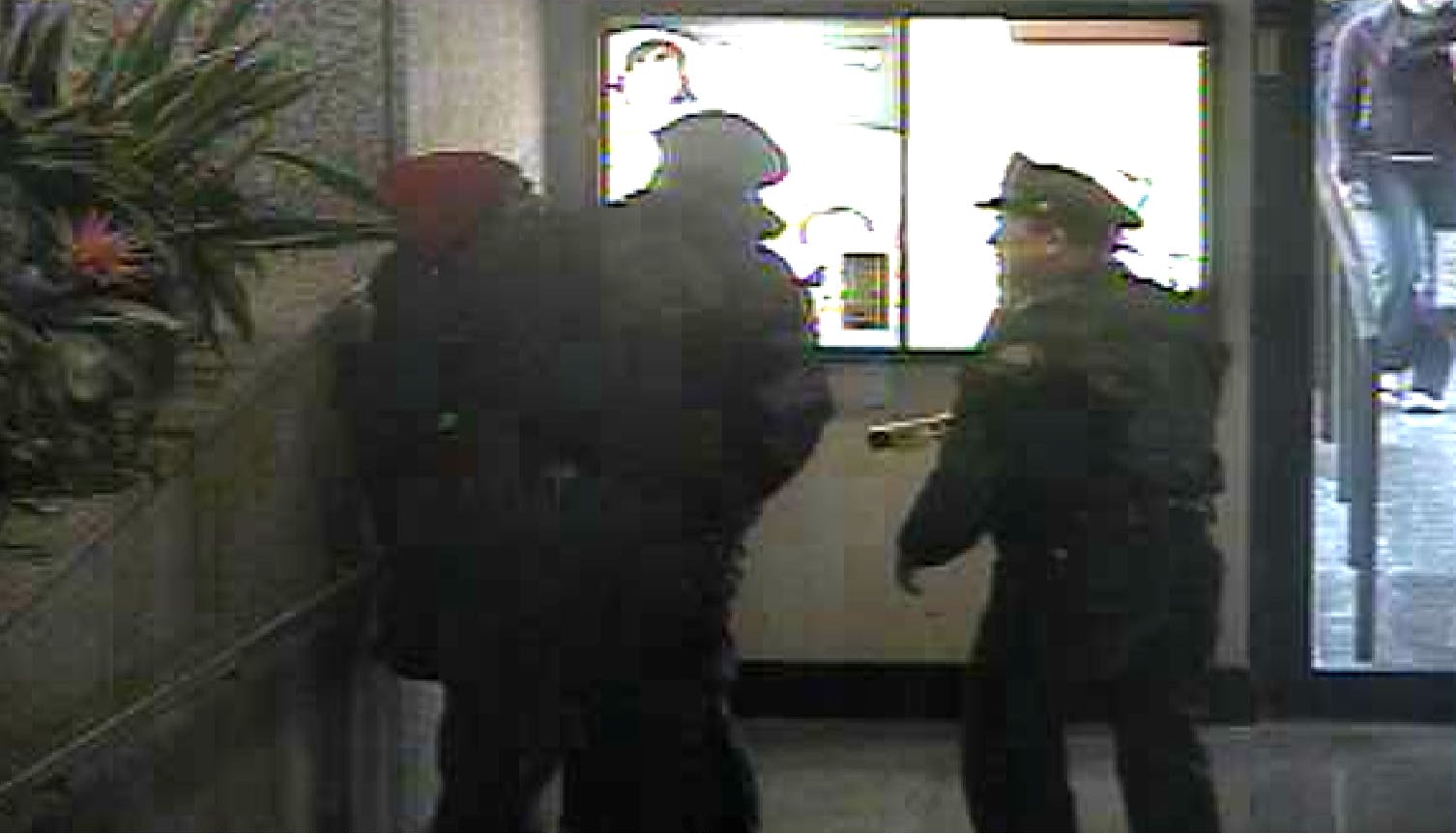Weeks after a cellphone video of a man's arrest in a St. Paul skyway prompted an internal investigation, police released surveillance footage Wednesday showing officers speaking with the man and stunning him with a Taser during what he alleges was a racially motivated confrontation last winter.
But while the footage from two surveillance videos, neither of which had audio, offered more visual detail on a case that has garnered national attention, it provided little additional clarity on whether the tasing and arrest of Chris V. Lollie were warranted.
The videos, from two downtown buildings, were released weeks after Lollie published on YouTube his own cellphone video of his arrest. That video, since viewed more than 1 million times, led St. Paul Mayor Chris Coleman to ask for an internal investigation into the police handling of the arrest.
Lollie has said that he was waiting to pick up his children from preschool on the morning of Jan. 31 when a security guard tried to kick him out of a First National Bank lounge. The guard called police, who eventually used a Taser on him before arresting him.
Lollie, 28, is black and contended to the officers that he was targeted because of his race. The three officers shown on the surveillance videos appear to be white.
Lollie was charged with trespassing, disorderly conduct and obstructing the legal process. Those charges were dropped in July.
The surveillance videos, which became public at the end of Lollie's investigation, were released by police Wednesday after the Star Tribune and other media outlets filed data requests.
Sgt. Paul Paulos, a police spokesman, played the videos for journalists Wednesday morning and explained some general details to give "a broader perspective."
"This is a fair and impartial investigation," he added.
The video from the First National Bank building showed the seating area and the nearby security desk. Lollie can be seen sitting in a chair.
Minutes later, a woman also sits down in the lounge. Shortly thereafter, a security guard appears and says something to both of them before leaving. Another man sits down a short time later, and the guard returns and again appears to say something to Lollie and the woman. The woman leaves.
The guard stays a bit, then departs, leaving Lollie and the other man in the lounge.
About 15 minutes after he sat down, Lollie gets up and walks north toward the skyway as police officer Lori Hayne walks toward him. The other man continues to sit in the lounge area a bit longer before leaving. It doesn't appear as though the man was told to leave.
In the second video, taken from the Securian Center building, Hayne is walking beside Lollie. Officer Michael Johnson arrives and appears to direct the group to the side. As the camera zooms in, Lollie is talking to officers with his back to a handrail.
Officer Bruce Schmidt arrives shortly afterward as the officers talk with Lollie. Police appear to be grabbing Lollie as Schmidt takes out his Taser.
Paulos said Wednesday that Schmidt gave a warning twice before he activated the Taser and placed it against Lollie's body. The video shows Lollie dropping to the ground as police secure his hands behind his back and search him as people walk by. A plainclothes police officer also appears and watches the arrest, Paulos said. Officers then help Lollie to his feet and walk him away.
Insufficient evidence
While the security guards said in police reports that they told Lollie that the chairs at First National were not in a public waiting area, City Attorney Sara Grewing said last week that the charges against Lollie were dropped because there was no evidence he was on private property.
Mark Edwards, a law professor at William Mitchell College of Law, said after viewing the videos that it did not appear that police had a reasonable suspicion that a crime had been committed before detaining Lollie, as required by law.
Without that, requiring someone to identify themselves is unlawful, Edwards said.
"Police must have a reasonable justification before intruding into a person's autonomy by detaining him," Edwards said. "From what I can see, they didn't have it here. Lollie is right."
Civil rights attorney Mike Padden, after viewing the surveillance videos, agreed, saying that based on the police reports, it didn't seem that police had probable cause to stop Lollie.
"I think perhaps they will see this whole process as an educational tool," he said of police. "I think it was a clear example of excessive force."
The St. Paul Police Federation, however, had a different take on the videos, saying that they showed that Lollie had refused to follow a lawful order.
"We welcome these videos being released as they show that the officers involved handled the situation professionally and in accordance with their training," federation attorney Chris Wachtler said.
Wachtler added that the question of whether the seating area was private or public was irrelevant because the police were informed by security at the time that Lollie had been asked to leave a private area. Officers, he said, were "duty-bound to investigate."
Before the surveillance videos were shown Wednesday, police asked journalists to sign a "video advisory" sheet addressing what they were about to watch. The sheet pointed out that reporters would be seeing images in "a controlled environment" and in "slow motion," while officers responding that day had no such advantage.
Staff Writer Paul Walsh contributed to this report.
Nicole Norfleet • 612-673-4495
Twitter: @stribnorfleet

Fall or spring, it's Rochester Mayo's year in prep tennis

Minneapolis reaches $150k settlement with eyewitness of George Floyd's murder

Israel-Hamas war creates 'really fraught times' at Minn. colleges

Rare and fatal brain disease in two deer hunters heightens concerns about CWD



